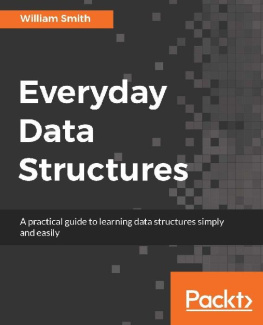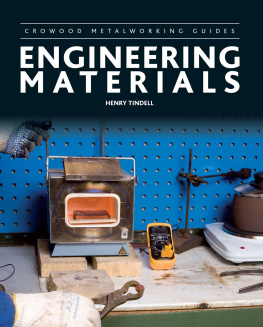
page i
Foundations of
Materials Science
and Engineering
Seventh Edition
William F. Smith
Late Professor Emeritus of Engineering of
University of Central Florida
Javad Hashemi, Ph.D.
Professor of Ocean and Mechanical Engineering
Florida Atlantic University

page ii
FOUNDATIONS OF MATERIALS SCIENCE AND ENGINEERING
Published by McGraw Hill LLC, 1325 Avenue of the Americas, New York, NY 10019. Copyright 2023 by McGraw Hill LLC. All rights reserved. Printed in the United States of America. No part of this publication may be reproduced or distributed in any form or by any means, or stored in a database or retrieval system, without the prior written consent of McGraw Hill LLC, including, but not limited to, in any network or other electronic storage or transmission, or broadcast for distance learning.
Some ancillaries, including electronic and print components, may not be available to customers outside the United States.
This book is printed on acid-free paper.
1 2 3 4 5 6 7 8 9 LCR 27 26 25 24 23 22
ISBN 978-1-260-59770-7
MHID 1-260-59770-9
Cover Image: Shutterstock/Flying Camera
All credits appearing on page or at the end of the book are considered to be an extension of the copyright page.
The Internet addresses listed in the text were accurate at the time of publication. The inclusion of a website does not indicate an endorsement by the authors or McGraw Hill LLC, and McGraw Hill LLC does not guarantee the accuracy of the information presented at these sites.
mheducation.com/highered
page iii
ABOUT THE AUTHORS
Javad Hashemi is a Professor of Mechanical Engineering at Florida Atlantic University. Javad received his Ph.D. in Mechanical Engineering from Drexel University in 1988. Prior to his tenure at Florida Atlantic University, Javad served as Professor of Mechanical Engineering and Associate Dean of Research for the College of Engineering at Texas Tech University. Over the course of his career, Dr. Hashemi has published over 50 articles in archival journals in the areas of materials, mechanics, and biomechanics. He has taught undergraduate and graduate level courses in materials, structural analysis, design, biomechanics and has developed a materials laboratory course with a variety of experiments.
The late William F. Smith was Professor Emeritus of Engineering in the Mechanical and Aerospace Engineering Department of the University of Central Florida at Orlando, Florida. He was awarded an M.S. degree in metallurgical engineering from Purdue University and a Sc.D. degree in metallurgy from Massachusetts Institute of Technology. Dr. Smith, who was a registered professional engineer in the states of California and Florida, taught undergraduate and graduate materials science and engineering courses and actively wrote textbooks for many years. He was also the author of Structure and Properties of Engineering Alloys, Second Edition (McGraw Hill, 1993).
page iv
TABLE OF CONTENTS
page v
page vi
page vii
page viii
page ix
page x
page xi
page xii
page xiii
page xiv

page xv
PREFACE
T he subject of materials science and engineering is an essential course to engineers and scientists from all disciplines. With advances in science and technology, development of new engineering fields, and changes in the engineering profession, todays engineer must have a deeper, more diverse, and up-to-date knowledge of materials-related issues. At a minimum, all materials science and engineering students must have the basic knowledge of the structure, properties, processing, and performance of various classes of materials. This is a crucial first step in the materials selection decisions in everyday rudimentary problems. A more scientific understanding of the same topics is necessary for designers of complex systems, forensic (materials failure) analysts, and research and development engineers/scientists.
Accordingly, to prepare materials scientists and engineers of the future, Foundations of Materials Science and Engineering is designed to present diverse topics in the field with appropriate breadth and depth. The strength of the book is in its focus on key concepts in science of materials (basic knowledge) followed by application of scientific principles in selection and engineering of materials (applied knowledge). The basic and applied concepts are integrated through concise textual explanations, relevant and stimulating imagery, detailed sample problems, electronic supplements, and homework problems. This textbook is therefore suitable for both an introductory course in materials at the sophomore level and a more advanced (junior/senior level) second course in materials science and engineering. Finally, the seventh edition and its supporting resources are designed to address a variety of student learning styles based on the well-known belief that not all students learn in the same manner and with the same tools.
With every new edition, it is our intent to improve and complement the explanations of the underlying science of materials. As a result, in this new edition, we have made numerous updates described below:
Chapter 1, a section on the ever important environmental considerations in selection of materials has been added. Life-cycle analysis for materials selection and sustainability (renewable materials and nonrenewable materials) has been introduced. We hope to expand on this topic in future editions.
Chapter 2, the important concept of energy levels for multi electron atoms has been explained in detail. The concept of effective nuclear charge accounting for electron shielding is clarified and Slaters rule used to determine the energy associated with any electron is introduced.
Chapter 3, a more detailed explanation of Bravais lattice, unit cells, the extent of symmetry of a unit cells, and motif is presented.
Chapter 4, the concept of Gibbs free energy is discussed in more detail and the derivation of the critical radius for stable solidification has been updated.
Chapter 5, the relationship between number of vacancies and Gibbs free energy is explained. The theoretical foundation and development of Ficks second law is described.
page xvi
Chapter 6, the concept of resolved shear stress is explained in more detail.
Chapter 7, theoretical strength, Griffiths theorem, and stress concentration factors are introduced to enhance understanding of brittle fracture of materials. The concept of stress intensity factor is introduced and fracture toughness is explained in more detail.
Chapter 9, the impact of specific alloying elements on properties of steel is discussed.
The end-of-chapter problems have been classified according to the learning/ understanding level expected from the student by the instructor. The classification is based on Blooms Taxonomy and is intended to help students as well as instructors to set goals and standards for learning objectives. The first group in the classification is the Knowledge and Comprehension Problems. These problems will require students to show learning at the most basic level of recall of information and recognition of facts. Most problems ask the students to perform tasks such as define, describe, list, and name. The second group is the Application and Analysis Problems. In this group, students are required to apply the learned knowledge to the solution of a problem, demonstrate a concept, calculate, and analyze. Finally, the third class of problems is called Synthesis and Evaluation Problems. In this class of problems, the students are required to judge, evaluate, design, develop, estimate, assess, and in general synthesize new understanding based on what they have learned from the chapter. It is worth noting that this classification is not indicative of the level of difficulty, but simply different cognitive levels.
Next page














